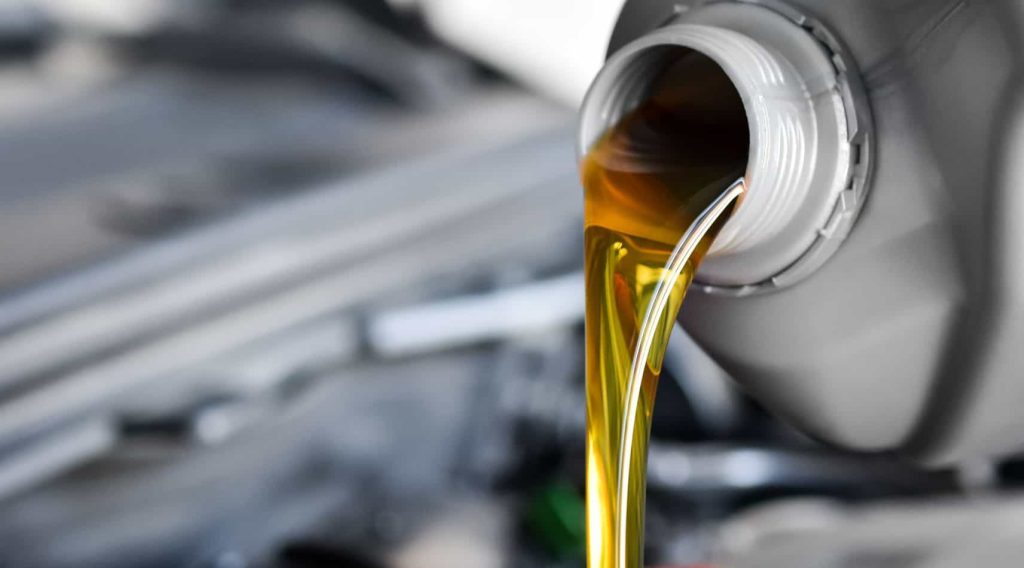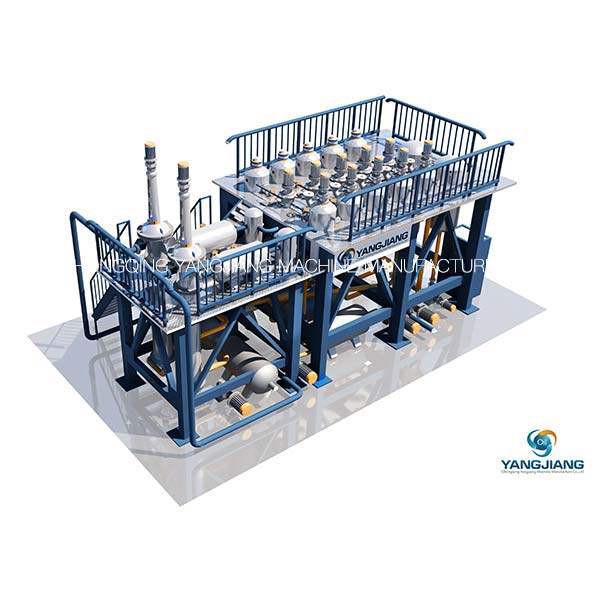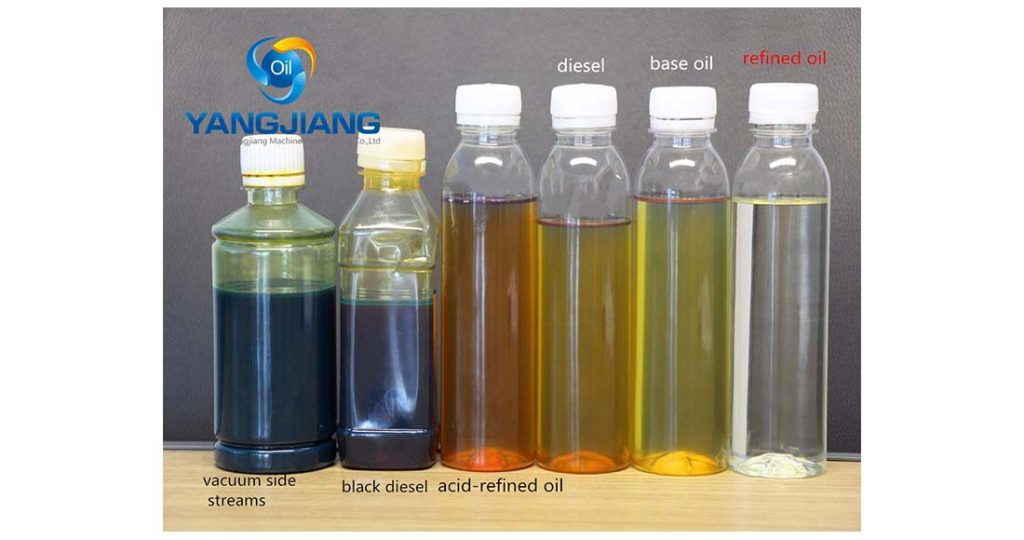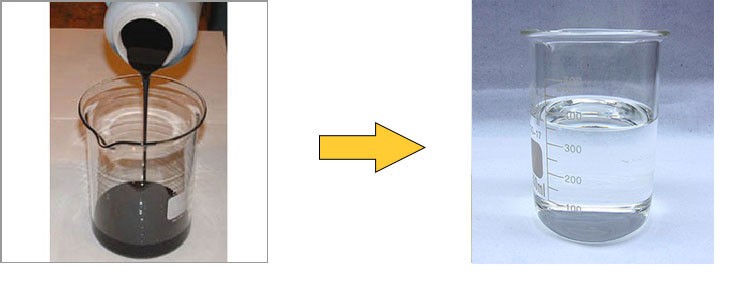The Situation of the Waste Oil Recycling
Now more and more companies choose waste oil recycling equipment. Waste oil recycling work started earlier beyond seas. In the 1960s, some developed countries in Europe and America began to study waste oil and accumulated valuable experience. So far, western countries are in the leading position in the recycling industry and the whole oil industry. Their success is due to sound policies and government subsidies. It can be seen that the relevant government policies, industry standards, and market cooperation are the preconditions for the realization of a virtuous recycling cycle of waste oil. The supply and demand analysis report and investment prospect of China’s waste oil market in 2013-2017 released by Boz data show that despite the existence of waste oil products in China, the effective utilization of waste oil has not made effective progress. China’s waste oil market has a large scale and will increase with the increase of market demand. However, in China, the reasonable recovery rate of waste oil is not high, which is mainly restricted by the relevant national and local industry policies and regulations, the upstream waste oil recovery link, and the downstream recovery technology.

Although the state and the oil industry have been promoting the formulation and implementation of policies, at present, although the policies and regulations are instructive, they have not been implemented. And there is no severe punishment and financial reward, which makes it difficult to operate. Due to the large area, different regions have different input and understanding of waste oil recovery and regeneration, and different implementation methods, leading to many difficulties in the recovery process of the waste oil recovery industry. Except for special oil fields, other industries are difficult to exploit, mainly including the following problems:
- Waste oil is not recovered by classification, and the variety of mixed oil is complex. Different types and proportions of waste oil mixing make the subsequent regeneration more difficult.
- Restricting transportation. The waste oil has a complex composition, contains different pollutants and impurities, which may cause tank corrosion and scale. Therefore, transportation equipment should be anti-corrosion and explosion-proof at the same time.
- Illegal disposal. If there is no qualified unit nearby to deal with the hazardous waste generated by the automobile repair industry, the unit has poor compliance and long transportation distance, resulting in high transportation and disposal costs. Waste oil will be transferred to other oil companies for treatment or even sold to waste oil stations without going through transfer procedures.
The Methods to Refine the Waste Lubricant
Recovery of waste lubricants requires much less energy consumption than the extraction of lubricants from crude oil. Recycling waste lubricants also protects the environment. Nowadays, there are several ways to recover waste lubricating oil by solvent.
1. Furfural Solvent-based Compound Solvent Technology
Furfural refining technology, as a traditional and mature solvent refining technology, has been widely used in the field of waste oil recycling. The furfural solvent has good adaptability to oil products。 It has the advantages of low prices and easy-to-obtain raw materials. However, the disadvantages of furfural refining are that the solubility of furfural solvent is small, the ratio of agent to oil is large, and the energy consumption for solvent recycling is increased. Furfural is easily cracked and condensed at a temperature higher than 230 ° C and has poor thermal stability. Therefore, the use of light hydrocarbons and furfural solvents can not only increase the selectivity of the solvent but also reduce the energy consumption of the production, so as to improve the entire process of waste lubricating oil regeneration.
In addition, the use of surfactant sodium dodecyl benzenesulfonate or polyether as a co-solvent can prevent the formation of water-in-oil molecular films caused by emulsifiers in waste lubricating oil, thereby improving the yield of refined oil. The results show that the effect of refining solvents is better than that of the furfural single solvent by adjusting the reaction temperature and the ratio of agent to oil. The selected compound solvent should have the following characteristics:
- The boiling point and heat capacity of the solvent are lower than those of furfural, which can reduce the recovery temperature of the solvent and reduce energy consumption.
- The density of the solvent is less than furfural, which facilitates phase separation and reverses the flow of furfural refining process.
- The solvent has a strong ability to selectively dissolve the non-ideal components of the lubricating oil and reduces the refining temperature.
2. N-methyl pyrrolidone (NMP) Solvent-based Compound Solvent Technology
NMP refining technology plays an important role in the field of solvent refining. NMP has good selectivity and solubility for unsaturated hydrocarbons, aromatic hydrocarbons, and sulfides. Compared with furfural and phenol, N-methylpyrrolidone solvent has good chemical stability and thermal stability. Its advantages are low volatility and low toxicity. However, the solvent easily corrodes the solvent recycling equipment and is expensive. Not only that, but the shortcomings such as large energy consumption and long time required for the distillation and refining process also limit its use.
In order to improve the selectivity of N-methylpyrrolidone solvent refining, NMP, and related auxiliary agents are usually used as a compound solvent. The added auxiliaries are mainly water and ethanolamine. The results show that the determination of process parameters and the chemical composition of the refined oil affect the electrical and oxidation properties of the refined oil. The best process parameters are suitable extraction temperature, 1% water, and the ratio of NMP to low solvent oil is 0.5.

With the development of the global economy, the world’s oil resources become increasingly prominent, waste oil recycling has become a strategic issue in the development of the circular economy. At present, China actually consumes more than 6 million tons of lubricating oil every year, more than 90% of which can be recycled, and there is a huge market potential for recycling waste oil. If appropriate waste oil recycling technology is adopted, the waste oil recycling rate can reach 70% and the energy consumption is only 15% of the lubricating oil extracted from crude oil, which has considerable economic benefits.
The recycling of waste oil can adopt the following methods: repurification, and re-refining. The products of waste oil regeneration and recycling are lubricating oil and fuel oil with low-quality requirements, while waste oil refining is the base oil with the same quality as crude oil. Generally speaking, the refining of waste oil should go through four steps: dehydration, deasphalting, fractionation, and refining.
To recycle waste oil, the best way is to use the solvent extraction plant. Why solvent extraction equipment is the best choice for customers. The solvent extraction plant which is manufactured by Yangjiang Machinery Manufacturing Co., Ltd. has many excellent characteristics. And the solvent of Yanjiang is a self-developed composite additive, not a single additive. The general solvent refining only can get the oil with the color standard of 1.0. The solvent refining can get the oil with the color standard of 0.1.
First, Let us talk about the information of the solvent extraction plant.
The Working Flow of Solvent Refining Equipment

- Preheating part: The raw oil is preheated to the working temperature in a preheating tank with stirring.
- Pre-treatment part: The preheated feed oil and working fluid 1 enter the displacer of the pre-treatment part at the same time. Through the special working principle of the displacer, most of the sulfides and oxides in the feed oil are made, Nitrides, colloids, asphalt, aromatics, and unsaturated hydrocarbons are adsorbed by working fluid 1. The oil separated from the working fluid 1 enters the next stage of deep processing.
- Recycling of working fluid in the pre-treatment section: Working fluid 1 is processed by the recovery module to precipitate the adsorbed various components, and the residue is formed and sent to the residue tank. The working medium 1 is kept recycled in the pre-processing section.
- Advanced processing part: The semi-finished oil processed by the pre-processing part is sent to the advanced processing module together with working fluid 2. Working fluid 2 adsorbs the residual impurities in the semi-finished oil, and at the same time, it absorbs the entrainment from the previous processing A small amount of working fluid 1. The oil separated from the working fluid 2 enters the filtering part.
- Recycling of working medium in the advanced processing part: After working medium 2 is recovered and processed, a small amount of impurities and working medium 1 are precipitated, and the precipitated mixture is sent to the working medium 1 recovery processing module in the previous stage for recycling. Quality 2 is recycled after regeneration.
- Filtration: The oil after deep processing is filtered by oil distillation machine to intercept the trace solid particles generated or entrained in the oil, improve the cleanliness of the oil, and then send it to the finished product tank.

Technical Characteristics:
- It is completely pollution-free. Except for the necessary heating device, which emits a small amount of carbon dioxide, there is no emission of waste gas, waste water and waste residue. During the processing, no chemical reagents such as oxidants, no catalysts, no white clay or silica-based filters or filter aids, and no consumables such as filter paper or filter cloth are consumed.
- The refined cost is low. The cost of processing base oil is about 200 yuan per ton, which is much lower than the processing methods such as hydrogenation and Lewis acid. The cost of processing diesel is about 150 yuan per ton.
- Low loss. The processing principle of this device is to replace impurities, sulfides, oxides, colloids, asphalt, and other chromogenic groups in the separation oil or substances that affect the performance of the base oil through a special device structure, avoiding conventional Unnecessary loss of base oil components during refining. Taking waste oil decompression crude oil as an example, the total oil loss is 1.5% -2%; the diesel refining loss is 1% -1.5%.
- High economic benefits: Compared with common processes in the market, the processing cost can save 100-300 yuan per ton; the price increase caused by the improvement of product quality increases about 800 yuan per ton; the reduction of losses brings about 200 yuan per ton. , The total economic benefits increased by 1100-1300 yuan per ton.
We have introduced some information about the solvent refining equipment of Yangjiang. For more information, please contact us.


